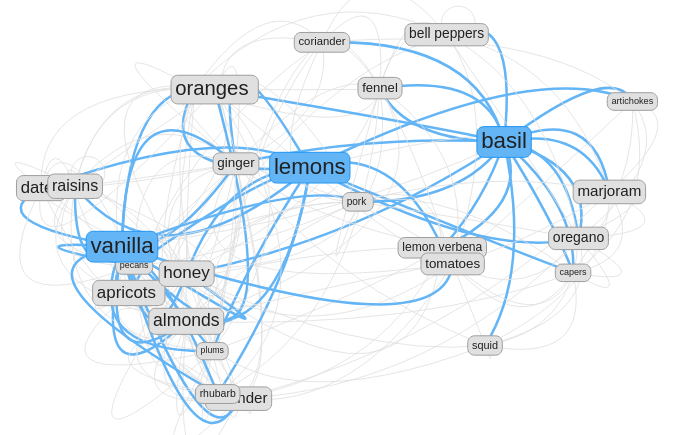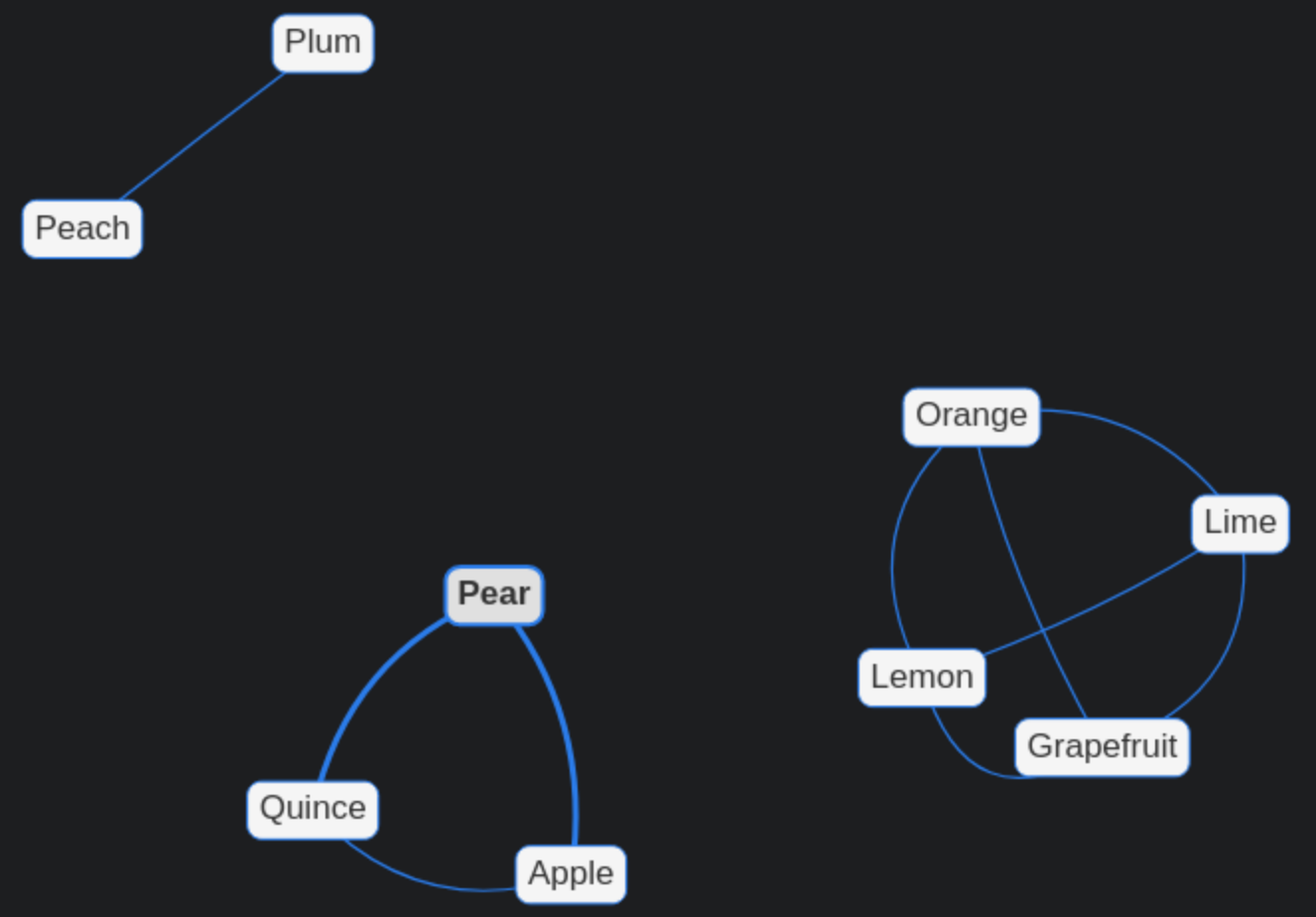
The Flavor Network
This tool allows you to explore the flavor network, a social graph for flavor profiles. The network is based on the Flavor Bible and soon the companion book What to Drink with What You Eat.

This tool allows you to explore the flavor network, a social graph for flavor profiles. The network is based on the Flavor Bible and soon the companion book What to Drink with What You Eat.

Les Miserables is one of my favorite books. I read most of the original translation on a train ride to Portland, OR from Chicago, IL back in 2008 and enjoyed the remainder on the return trip back East. It taught me compassion: when Valjean places the coin in Cosette’s shoe. Father Christmas always misses her. There was an earlier passage of a man stepping on a coin in front of her, while she swept dressed in rags. ...

This is a follow-up to the previous post Network Graphs in Hugo. I’m feeling fruity. These aren’t all tree fruits, but a few clusters organized by tree grafting compatibility. Data for the network is stored in two separate JSON files, both located in /static/data/fruit/: nodes.json edges.json The javascript and the shortcode, as one file: ...

This is a simple toy to see how a network graph can be added in a Hugo article. I’ll be testing new features on it as I learn new things. Relative to the root of the Hugo website directory, here’s some basic files to make this interactive. Note that The JSON data and CSS is added inline here to make the scope of this tutorial focus on Hugo-specific structures. The javascript file was put in /static/js/ and can be found here: ...